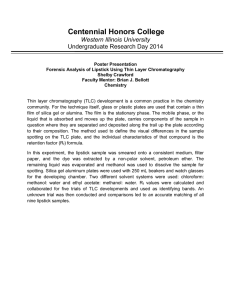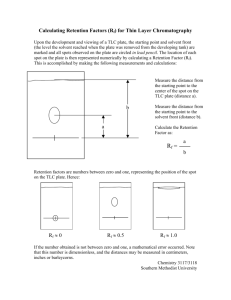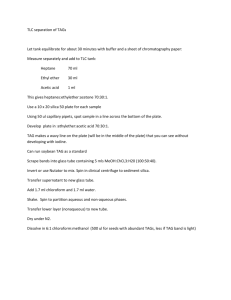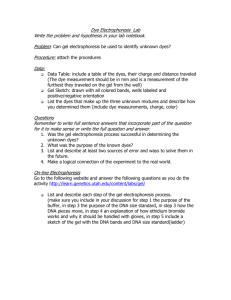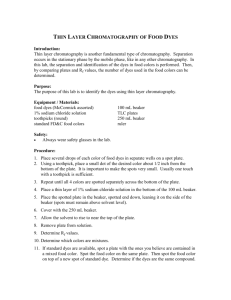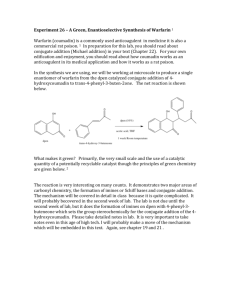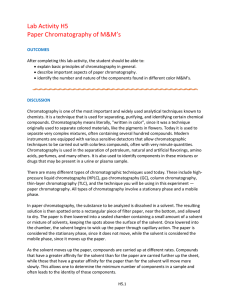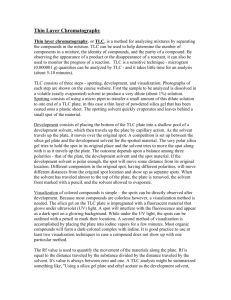How TLC Separates the Ink Dyes
advertisement
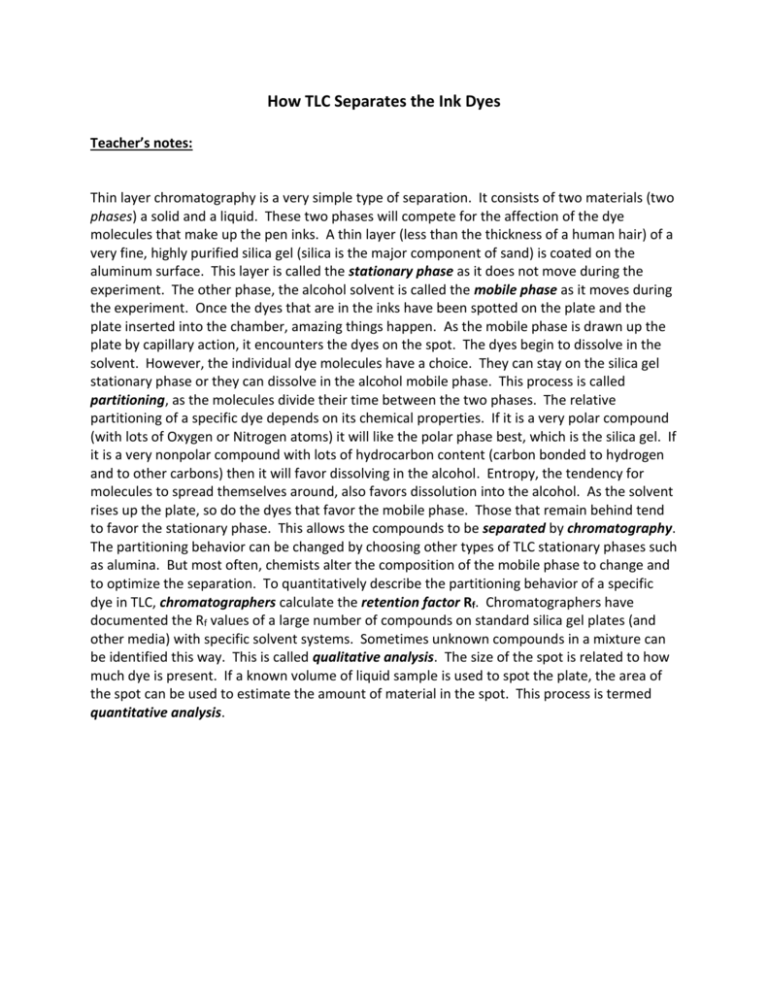
How TLC Separates the Ink Dyes Teacher’s notes: Thin layer chromatography is a very simple type of separation. It consists of two materials (two phases) a solid and a liquid. These two phases will compete for the affection of the dye molecules that make up the pen inks. A thin layer (less than the thickness of a human hair) of a very fine, highly purified silica gel (silica is the major component of sand) is coated on the aluminum surface. This layer is called the stationary phase as it does not move during the experiment. The other phase, the alcohol solvent is called the mobile phase as it moves during the experiment. Once the dyes that are in the inks have been spotted on the plate and the plate inserted into the chamber, amazing things happen. As the mobile phase is drawn up the plate by capillary action, it encounters the dyes on the spot. The dyes begin to dissolve in the solvent. However, the individual dye molecules have a choice. They can stay on the silica gel stationary phase or they can dissolve in the alcohol mobile phase. This process is called partitioning, as the molecules divide their time between the two phases. The relative partitioning of a specific dye depends on its chemical properties. If it is a very polar compound (with lots of Oxygen or Nitrogen atoms) it will like the polar phase best, which is the silica gel. If it is a very nonpolar compound with lots of hydrocarbon content (carbon bonded to hydrogen and to other carbons) then it will favor dissolving in the alcohol. Entropy, the tendency for molecules to spread themselves around, also favors dissolution into the alcohol. As the solvent rises up the plate, so do the dyes that favor the mobile phase. Those that remain behind tend to favor the stationary phase. This allows the compounds to be separated by chromatography. The partitioning behavior can be changed by choosing other types of TLC stationary phases such as alumina. But most often, chemists alter the composition of the mobile phase to change and to optimize the separation. To quantitatively describe the partitioning behavior of a specific dye in TLC, chromatographers calculate the retention factor Rf. Chromatographers have documented the Rf values of a large number of compounds on standard silica gel plates (and other media) with specific solvent systems. Sometimes unknown compounds in a mixture can be identified this way. This is called qualitative analysis. The size of the spot is related to how much dye is present. If a known volume of liquid sample is used to spot the plate, the area of the spot can be used to estimate the amount of material in the spot. This process is termed quantitative analysis.
